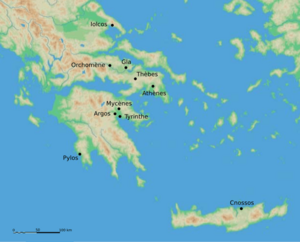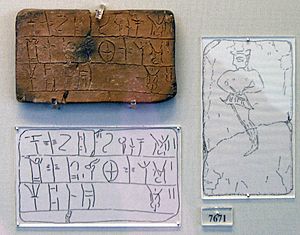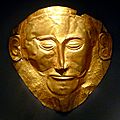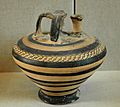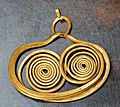Mycenaean culture facts for kids
The Mycenaean culture was an important early Greek civilization. It existed during the Bronze Age, from about 1600 to 1100 BC. This culture was found on the Greek mainland and also on the island of Crete.
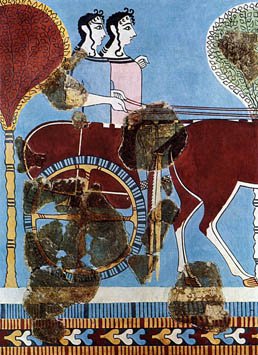
The famous Greek writer Homer called these people Achaeans in his epic poem, the Iliad. The name "Mycenaean" comes from Mycenae. This was a very important ancient site about 90 kilometers from Athens.
Other big Mycenaean cities included Athens, Thebes, Tiryns, and Pylos. Homer's great poems, the Iliad and the Odyssey, tell stories that come from this Mycenaean time.
The Mycenaeans were different from the earlier Minoans. The Minoans mostly traded with others. The Mycenaeans also traded, but they were also known for conquering new lands.
Contents
The Mycenaean Language and Writing
Mycenaean Greek is the oldest known form of the Greek language. People spoke it on the Greek mainland and on Crete. This was during the Mycenaean period, from the 16th to the 12th centuries BC.
The language was written on clay tablets. The special writing system they used is called Linear B. Most of these tablets were found in Knossos on central Crete. Many were also found in Pylos, in the southwest of the Peloponnese. Other tablets have been found at Mycenae, Tiryns, Thebes, and Chania in Western Crete.
For a long time, no one could understand what the tablets said. Then, in 1952, a smart person named Michael Ventris finally figured out the writing. He showed that the language was an early form of Greek.
The texts on these tablets are mostly lists and records. They are like ancient shopping lists or inventory reports! There are no stories, myths, or poetry on them. But they still give us clues about the people who wrote them.
Who Were the Mycenaeans?
Later Linear B tablets suggest that the people we call Mycenaeans might have called themselves Achaeans. We haven't found any written records from Mycenaean sites that say what they called themselves.
In Homer's Iliad, the people living in the Peloponnese and nearby islands are often called Achaeans. There are also mentions of the Ahhiyawa in Hittite writings from the Late Bronze Age. Some scholars think Ahhiyawa might refer to the Achaeans, meaning the Mycenaeans.
For example, a letter from a Hittite king (around 14th–13th century BC) to the king of Ahhiyawa treated him as an equal. This letter suggests that the city of Miletus was under the control of Ahhiyawa. It also talks about an earlier conflict involving Ahhiyawa and a place called 'Wilusa'. Many believe Wilusa is the legendary city of Troy.
The exact link between Ahhiyawa and the Achaeans is still debated by experts. This is true even after we learned that Mycenaean Linear B is an early form of Greek.
The End of the Mycenaean Age
By the late 13th century BC, many Mycenaean sites on mainland Greece faced a lot of destruction. The Mycenaean cities began to decline. People moved to safer places.
This time is known as the Greek Dark Ages. During this period, very little or no writing was done. This lasted until about the 8th century BC. You can learn more about this and later times in the article about Ancient Greece.
Images for kids
-
A warrior wearing a boar's tusk helmet. This comes from a Mycenaean tomb in the Acropolis of Athens, 14th–13th century BC.
-
A famous death mask, known as the Mask of Agamemnon. It was found in Grave Circle A, Mycenae, 16th century BC.
-
Marching soldiers on the Warrior Vase, from around 1200 BC. This krater (large mixing bowl) was found in Mycenae.
-
Invasions, destructions, and possible population movements during the collapse of the Bronze Age, around 1200 BC.
-
A Mycenaean palace amphora (a large jar), found in the Argolid.
-
A Mycenaean stirrup vase found in the acropolis of Ugarit, Eastern Mediterranean (c. 1400–1300 BC).
-
The Lady of Phylakopi. This pottery figurine of a goddess or priestess is from the West Shrine in Phylakopi, 14th century BC.
-
A map of the palace and its strong walls at Tiryns.
-
Cyclopean masonry, showing the back of the Lion Gate at Mycenae, Greece.
-
Part of the long passageways inside the walls of Tiryns.
-
A silver rhyton (drinking horn) shaped like a bull's head, with gold horns. From Grave Circle A at Mycenae, 16th century BC.
See also
 In Spanish: Civilización micénica para niños
In Spanish: Civilización micénica para niños


